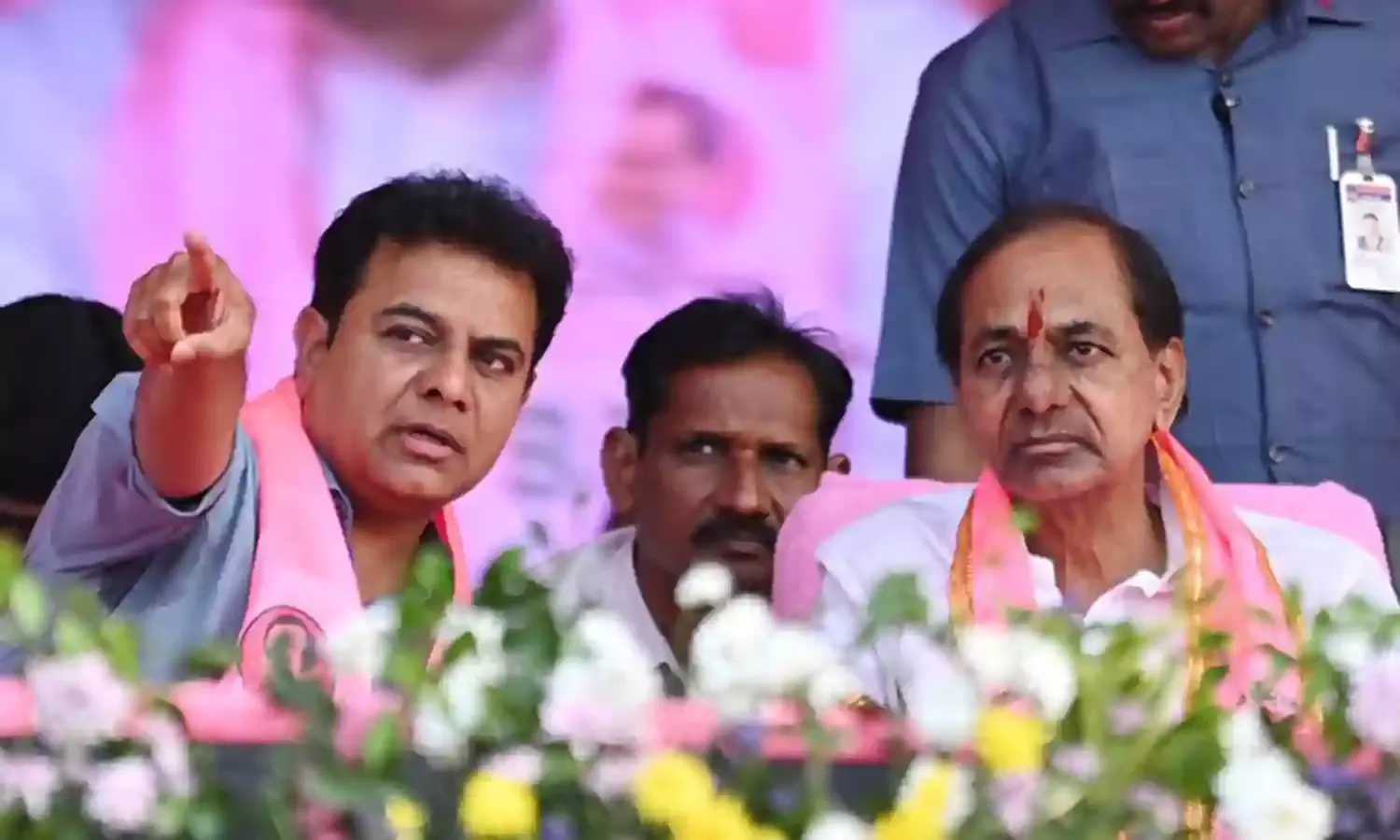Telangana - KCR Transferred Votes to BJP
Polls 2024

Former Telangana Chief Minister K. Chandrashekhar Rao’s Bharat Rashtra Samithi (BRS) has drawn a blank in the Lok Sabha elections 2024. The BRS’ meltdown, just ahead of the local bodies elections in the state, could pose a serious challenge, raising a question mark on its very survival.
Coming close on the heels of losing power in the state barely six-months ago, the BRS drew a blank in the Lok Sabha elections. This came as a shocker for the party that dominated the State politics for close to a decade.
The BRS decline is in direct proportion to the BJP rise in Telangana. The BJP, which polled 13.9 percent vote share in the state Assembly elections six months ago, found its vote share soar to 35 percent during the Lok Sabha polls.
The BRS defeat and the corresponding rise of the BJP in Telangana is being seen to be more as part of a deliberate design, and a covert BRS-BJP alliance. The BJP was not only eyeing an expansion of its footprint in the South, especially in Telangana, after its rout in Karnataka, but needed a sizable number of MPs from Telangana to bolster its Lok Sabha seats tally.
Disproportionate to its size and presence in the state, the BJP won eight of the 17 Lok Sabha seats of Adilabad (ST), Nizamabad, Karimnagar, Medak, Secunderabad, Malkajgiri, Chevella and Mahabubnagar.
For his part, KCR was looking for securing relief for his daughter K. Kavita, lodged in jail in the Capital, in the Delhi liquor scam. It seemed to suit KCR to sacrifice the party interests, in order to secure his daughter’s early release from jail.
During the Lok Sabha election campaign itself, Telangana Chief Minister A. Revanth Reddy said the BJP wants to wrest seats, as the Congress had a high probability of winning a large chunk of Lok Sabha seats in the state.
Sensing it in the midst of Lok Sabha elections campaign itself, the CM had hinted at a covert BRS-BJP alliance. Reddy was worried, as he was quick to grasp the political fallout. It was only in a three-cornered contest that the BJP would have been squeezed out.
The direct Congress-BJP contest, with the BRS tactically transferring its vote to the saffron party, would benefit the latter. But KCR's aim was to strengthen the saffron party in Telangana, to undermine the Congress.
The BRS managed to secure a 37.35 percent vote share even when it lost power in the Telangana Assembly elections, six months ago. In the Telangana Assembly polls, the BRS won 39 out of 119 Assembly seats in December, 2023.
Six months later, in the Lok Sabha elections, the BRS got 16.68 percent of the vote share, losing a staggering 21 per cent vote. But this time round, the party lost all the 17 Lok Sabha seats. In seven of the 17 seats, the party candidates forfeited their security deposits. Only in two Lok Sabha constituencies, the BRS candidates came as runners-up.
The normal expectation in the political circles was that since the people had handed out a stunning political defeat in the Telangana Assembly elections, in the Lok Sabha elections that followed, the BRS would set in motion the process for the political revival of the party in the state.
Then KCR belied the expectation and chose to knock out BRS from the contest. Why KCR embarked on such a politically suicidal course is intriguing, especially in view of the upcoming local bodies elections, likely to be held soon by the Revanth Reddy Government.
Apparently, there is a strategy behind what appears to be calculated transfer of BRS vote to the BJP. So, KCR chose to field either weak candidates, or the party candidates were advised to go slow, to enable BJP to emerge as the net beneficiary of the slowdown in the campaign of the BRS.
As a result, there was not only a straight contest between the Congress and the BJP, but the BRS vote got added to the saffron party, making the latter's sudden surge spectacular.
Also, KCR's alliance with All India Majlis-e-Itthehaad-ul-Muslimeen (AIMIM) ensured that a major chunk of Muslim vote did not go to the Congress. As a result, the Congress seats tally was limited to eight, which could have gone up to 12-13 seats.


